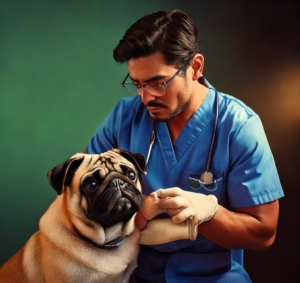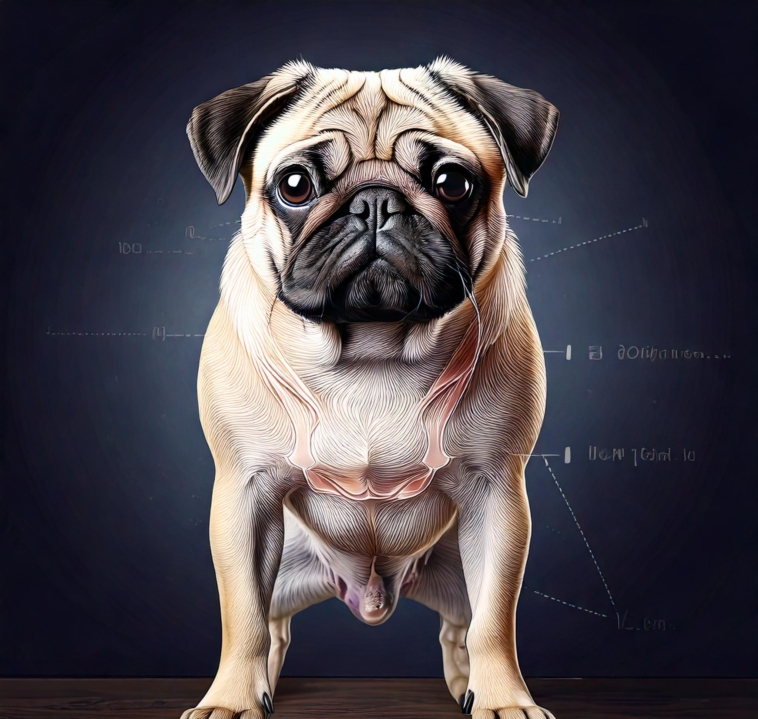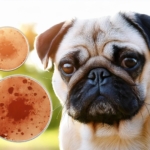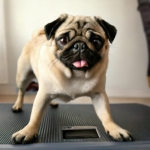Hip Dysplasia in Pugs: When Your Pug’s Hips Just Can’t Even
You’re familiar with that signature pug wiggle? Sometimes, it’s adorable. Other times, it’s their hips surreptitiously yelling for rescue. Meet hip dysplasia—a fancy medical term for “my joints don’t fit and I’m not happy about it.”
This condition is a normal genetic soap opera for pugs, in which their hip joints are roughly as well-suited as a square peg in a round hole. The outcome? Discomfort, ungainly waddles, and a complete loss of zoomie capability.
The Suspects: What Causes Hip Dysplasia in Pugs?
- Blame the Family Tree
If your pug’s great-grandpug had hip problems, chances are the family curse persists. - Chunky Monkey Syndrome
Excess pounds turns those short legs into overworked pillars of travail. - Growth Gone Wild
When puppies mature too rapidly or are fed too much, their joints cannot keep pace. - Roughhousing
Overactivity or trauma as a puppy can get things started in the wrong direction before the party begins. - Lazy Muscles
Weak muscles that surround the joint = unequal pressure = hip protest. - Negligent Breeding
Raising dogs without examining their hip history is like purchasing a car with no brakes and wishing it worked out.
Red Flags: Symptoms of Hip Dysplasia in Pugs
- Limping
Not a strut—it’s a plea for assistance. - Stiffness After Naps
Waking up like a geriatric man who napped on the couch in an incorrect manner. - Less Excited to Play
If your pug abruptly drops tug-of-war, something is amiss. - Bunny Hopping
Rabbit-running instead of dog-running? Not a good sign. - Stair Phobia
Declining stairs like they are haunted. - Hip Sensitivity
Pet their hips and receive the side-eye or a melodramatic flop. - Thigh Gap (Not the Trendy Kind)
Thigh muscle loss as a result of disuse. - Waddle Walk
That exaggerated wobble may be humorous but most often signals danger.

Diagnosis: How Vets Play Detective
- History Check
The vet questions like a doggy shrink. “How long has it been that this limp is occurring?” - X-Rays
The hip photoshoot, and all the secrets are revealed. - Physical Exams
Flexing, prodding, and assessing the dog’s walk like it’s on a catwalk. - Extra Tests
Blood tests, CT scans, possibly even an MRI if it’s getting serious.
Treatment Options: Getting Those Hips Back in Business
The No-Knife Route
- Weight Management
Sorry, fewer treats. A lighter pug stresses the hips less. - Pain and Anti-Inflammatory Meds
Because no one likes a grumpy joint. - Joint Supplements
Consider them daily vitamins for creaky hips. - Hydrotherapy
Swim therapy that strengthens muscles without stress—like doggy Pilates in water. - Massage and Physical Therapy
Euphemisms for doggy spa day, with actual health benefits. - Low-Impact Exercise
Easy walking and no more cliff diving off the couch. - Home Upgrades
Ramps rather than stairs, orthopedic beds, and supportive harnesses.
The Surgical Route (For When It’s Time to Call in the Big Guns)
- Femoral Head Ostectomy (FHO)
Cutting off the head of the thigh bone to eliminate pain. Your pug won’t miss it—we swear. - Total Hip Replacement (THR)
Out with the old, in with the shiny new titanium hip. High-tech and effective. - Triple Pelvic Osteotomy (TPO)
Realigns the hip socket. Best done before arthritis arrives uninvited. - Juvenile Pubic Symphysiodesis (JPS)
A mouthful of a name, but a straightforward procedure for puppies to enable the joint to develop properly.
Note: Surgery is serious business. Always consult your vet to find the right option.
Living the Good Life: Managing Hip Dysplasia Without Surgery
- Keep That Waistline Slim
Less pug to lug around = less agony. - Intelligent Exercise
Swimming, leisurely walks, no parkour. - Managing Pain
Make them comfortable with proper medication. - Helpful Supplements
Glucosamine and chondroitin may sound like something out of a can of energy drink, but they repair cartilage. - Ease Life
Install ramps, comfortable bedding, and refrain from forcing them to make Olympic-level couch jumps.
Prevention: Because Future You Doesn’t Want This Drama
- Monitor the Weight
Chubby is adorable until it’s orthopedic. - Routine Vet Check-Ins
Catch it early before your pug begins to stroll like an old sea dog. - Well-Balanced Diet
Ensure they’re receiving all the nutrients those teeny hips require. - Moderated Exercise
Enough for fitness, but not enough for a hip replacement. - Select Breeders Carefully
If the parents are tank-built, your pug has a better chance at sturdy hips.
Final Thoughts
Hip dysplasia in pugs may sound daunting, but with early detection, smart treatment, and a little lifestyle fine-tuning, your pug can live a comfortable, tail-wagging life. Whether you’re managing it with supplements and spa days or going full cyborg with hip replacements, the key is knowing the signs and acting early.
Because at the end of the day, your pug should be able to walk, run, or wiggle hurt-free—and perhaps even bust out a zoomie for good times’ sake.




